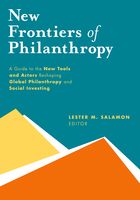For three years Factary produced a ‘Foundations of Wealth’ report focused on the Ultra High Net Worth Individuals (UHNWIs) and High Net Worth Individuals (HNWIs) (minimum estimated wealth of £10m) that founded grant-making trusts and foundations, featured in Factary’s New Trust Update during 2012, 2013 and 2014. We have now revisited these trusts and foundations to see how they are performing financially and what this means for hopeful beneficiaries.
These three reports, all available for free to New Trust Update subscribers via the new online archive service, contain profiles of 104 philanthropists and their grant-making trusts and foundations, of which nearly half are not on Trustfunding.org. Top of the list in terms of estimated wealth is Mrs Usha Mittal (£9.2bn) with other billionaires including the Swire family, the Fleming family, Ian Livingstone and Spiro Latsis. Together they have a combined estimated wealth of £34.36bn – the question is, how much of their wealth are they giving to charitable causes?
Based on financial information from the last financial year 98 trusts and foundations (six are still yet to submit their first set of accounts to the Charity Commission) had a total expenditure of £26.17m. Only seven had a total expenditure of over £1m in the last financial year whilst over one in 10 had an expenditure of £0 despite some having been registered for three years now. This is somewhat disappointing, especially when compared to their estimated wealth which shows that the average expenditure as a percentage of estimated wealth is a meagre 0.08%! Only seven individuals gave over 1% of their estimated wealth to other organisations in the last financial year, with the most generous person giving just under 3% of their estimated wealth as grants. This is well under the ‘5% of total assets’ figure that is often used as the basis for estimating gift capacity for major donors…
The biggest giver in terms of charitable expenditure was Sir Peter Harrison – former Chairman and Chief Executive Officer of computer network company Chernikeeff. The Peter Harrison Heritage Foundation had a total expenditure of £4.5m in 2013/14 which included a grant of £2m to the Clarence House Restoration Project and £1.75m to the Imperial War Museum.
The most generous philanthropist, giving away the greatest percentage of his estimated wealth as charitable expenditure, was Sir Mick Davis – former Chief Executive Officer of the mining company Xstrata plc from 2001 until its merger with Glencore in 2013. The Davis Foundation had a total expenditure of £2.2m in 2014/15 which equates to 2.95% of his estimated wealth. Grant recipients were not disclosed.
Other significant grants awarded by these new philanthropists in the last couple of years include £6m from The Dorothy & Spiro Latsis Benevolent Trust to Great Ormond Street Children’s Hospital and £1m to Boston Children’s Hospital (both in 2013 and hence excluded from this analysis of activity in the last financial year), £2m to the UBS Optimus Foundation by The Holroyd Foundation, £1m to the Royal Shakespeare Company by Lady Sainsbury’s Backstage Trust and £770,125 to Clinton Health Access Initiative by the Surgo Foundation UK.
Notable names that have been less than generous with their charitable giving via their foundations to date include Michael Lemos (son of Greek shipping tycoon Constantinos Lemos) whose CML Family Foundation donated £3,406 which is 0.001% of his estimated wealth of £605m and Richard Higham (Group Chief Executive of Acteon Group Ltd) whose Higham Family Trust had an expenditure of just over £6,000 in 2014/15, which represents 0.004% of his estimated £150m wealth. Some of those whose trusts and foundations have shown no financial activity include former CEO of wealth management company Towry Andrew Fisher, Conservative Party donor and Domino’s Pizza franchise owner Moonpal Singh Grewal and Abhisheck Lodha, Managing Director of global real estate developer Lodha Group.
Of course there will be a number of possible reasons why these figures are so low – not all their charitable giving is directed through their foundation; this is not their primary foundation; the nature of their wealth means they do not have high levels of liquid assets; or they are still in the process of building up reserves.
It is this last point that is perhaps of most interest when we look at the figures. Whilst the total expenditure was only £26.17m in the last financial year, the total assets of the 79 trusts and foundations for which data was available was over five times this amount at £148.7m. 25 of these have assets in excess of £1m and 10 have assets in excess of £5m. This equates to an average of 0.62% of the philanthropists’ estimated wealth, with 15 building up assets of over 5% of their estimated wealth.
The foundation showing the largest asset amount is The Christie Foundation founded by Iain Abrahams, the former Executive Vice Chairman of Barclays Capital. The foundation has assets of over £21m for 2014/15 which represents over 40% of his estimated wealth, making him the also most generous benefactor. So far the only identified donation made by his foundation is of £150,000 to the Elton John Aids Foundation, of which he is also a Trustee.
What this shows is the considerable potential these trusts and foundations have for the sector. Whilst they may not yet be giving at a level in keeping with their vast wealth, these UHNWIs and HNWIs are ear-marking significant amounts of their wealth to be given away to charitable causes over the course of their lifetime and beyond, sustaining the charitable sector for years to come.
The financial data for these 104 trusts and foundations, along with the three Foundations of Wealth reports and all the past issues of New Trust Update dating back to 2005, is available online to NTU subscribers. If you want further information about New Trust Update and our searchable archive please contact Nicola Williams.

